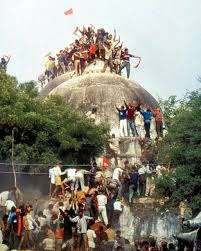Rebuilding Los Angeles: Navigating Wildfire Risks and Urban Development
In the wake of increasing wildfires and their devastating impact on California, the way we rebuild cities like Los Angeles must evolve. With Mayor Bass’s recent executive order aimed at expediting the rebuilding process post-disaster, it is critical to consider not only how to restore lost structures but also how to do so in a manner that ensures the safety and resilience of those communities against future wildfires.
The Current Landscape of Wildfire Risks
California has seen a marked increase in the frequency and severity of wildfires in recent years, with over 7 million acres burned from 2009 to 2018, more than double the amount seen from 1979 to 1988. The encroachment of wildfires into urban areas poses a significant challenge, particularly for cities like Los Angeles which are at the intersection of high housing demand and wildfire-prone zones.
Many of the areas affected by recent wildfires, including the Palisades and Eaton fires, were designated as “very high fire hazard zones.” These classifications serve as warnings for new developments to take precautionary measures, such as planting fire-resistant vegetation and maintaining defensible space around homes. However, the insatiable demand for housing often leads developers to overlook these risks, resulting in construction efforts in at-risk areas resuming shortly after disasters.
A Call for Responsible Development
In light of increasing housing shortages and rising property prices in urban centers, it’s essential for planners, developers, and policymakers to find a balance between meeting housing demands and ensuring safety. Nicholas Irwin, a real estate economist from the University of Nevada, Las Vegas, emphasizes the need for innovative strategies that discourage development in high-risk areas while promoting denser urban living.
Increasing Development Taxes
One strategy to deter development in hazardous zones could be increasing development taxes, which would make building in high-risk areas more expensive. This could encourage developers to focus on infill projects in underutilized urban spaces instead, leading to more efficient land use and less pressure on at-risk landscapes.
Encouraging Denser Development
Irwin highlights the importance of creating denser developments in urban locations that can accommodate the housing demand without encroaching into vulnerable ecosystems. By uplifting urban areas, communities can benefit from increased affordability while decreasing the likelihood of further residential sprawl into high-risk areas.
Infrastructure Improvements
Another vital area for improvement lies in the infrastructure surrounding wildfire management. Burying power lines, a solution that has gained traction in recent discussions, could significantly reduce the risk of wildfires sparked by power line failures—which have been linked to some of California’s most devastating fires. Though this infrastructural shift involves significant costs to utility customers, it is a long-term investment that could save lives and properties in the future.
A Collective Approach to Resilience
Ultimately, rebuilding after disasters is not just a matter of physical construction, but a collective societal decision. Moritz’s assertion that rebuilding is a “social values question” resonates deeply, as it urges communities to engage in discussions about future growth and resilience.
As Los Angeles navigates its rebuilding efforts, it becomes imperative to create a multi-faceted approach that integrates community input, respects natural fire risk zones, and embraces innovative residential solutions. Historically, the cycle of development in wildfire-prone areas has been reactive rather than proactive, but the stakes have never been higher.
Conclusion
The way Los Angeles chooses to rebuild in the aftermath of wildfire devastation is a vital issue that requires careful consideration and collaboration among city planners, developers, and residents. By leveraging lessons learned, adopting new development strategies, and investing in resilient infrastructure, LA can not only reclaim what has been lost but also pave the way for a more sustainable and secure urban future. As the effects of climate change continue to exacerbate risks, it is imperative for communities to recognize that resilient living must come with commitment and sacrifice. Ignoring these lessons might lead to a cycle of devastation—a pattern that cannot be allowed to persist.










